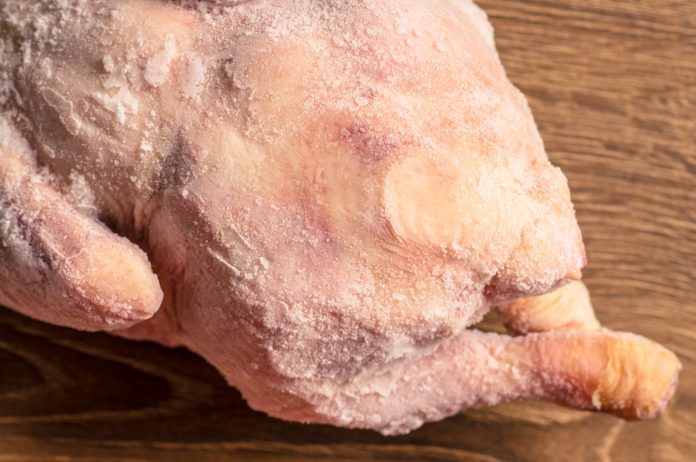It’s my first time hosting Thanksgiving, but I’m not sure when I should start thawing the turkey or even how to thaw it – what do I do?
If you are planning to cook a frozen turkey this year for the Thanksgiving holiday, you need to make sure that you thaw and cook it safely to help your guests avoid developing foodborne illnesses.
There are three safe ways to thaw a frozen turkey: in the refrigerator, in a container of cold water, or in a microwave, according to the U.S. Department of Agriculture Food Safety and Inspection Service.
Following safe thawing methods for turkey is necessary to prevent the potential growth of bacterial pathogens that may have been present on the bird before it was frozen, USDA says.
And while there are three ways to safely thaw your bird, USDA recommends thawing it in the refrigerator as the best method because it allows the turkey to thaw in a controlled environment out of the temperature “danger zone” — between 40 and 140 degrees — where bacteria can multiply rapidly.
Turkeys thawed in the refrigerator take one day for each 4-5 pounds of weight. So, for example, if your turkey weighs 12 pounds, it can take three days to thaw. But, once thawed, you should cook the turkey within two days to ensure safety.
If you find yourself needing to thaw the turkey using a faster method, you can place it in a container or sink and submerge it in cold water. It’s important that the turkey stay cold, so you need to ensure that the turkey is completely submerged in cold water by replacing the water with fresh cold water every 30 minutes. Turkeys thawed using this method will need 30 minutes of defrosting time per pound.
Also, keep the turkey in its original wrapping while thawing, USDA advises, and consider a secondary container to catch juices and condensation as the bird defrosts.
If you want to thaw your turkey in the microwave, you will need to take it out of its packaging and place it on a microwave-safe dish. Use the defrost function based on the turkey’s weight, USDA says. Generally, allow six minutes per pound to thaw. Once the turkey has thawed, you should cook it immediately.
Other safe turkey tips from USDA:
- Don’t wash your turkey! Why? Because bacterial pathogens, which can be present both on the inside and outside of a raw turkey, cannot be washed off. The only way to destroy this potentially dangerous bacterium is to cook the turkey to an internal temperature of 165 degrees Fahrenheit. Washing your turkey or other raw poultry will increase the chance that you spray pathogens over other parts of your kitchen, potentially contaminating your cooking area and sink.
- Use a meat thermometer to check the temperature of your cooked turkey and make sure it reaches 165 degrees Fahrenheit. You should insert the thermometer into three areas of the turkey to measure its internal temperature: in the thickest part of the turkey breast, in the innermost part of the wing and in the innermost part of the turkey thigh.
- Refrigerate your Thanksgiving leftovers within one hour of eating to prevent any pathogens that can cause foodborne illnesses from growing.
Happy Turkey Day!
Chow Line is a service of the College of Food, Agricultural, and Environmental Sciences and its outreach and research arms, OSU Extension and the Ohio Agricultural Research and Development Center. Send questions to Chow Line, c/o Tracy Turner, 364 W. Lane Ave., Suite B120, Columbus, OH 43201, or turner.490@osu.edu.
Editor’s Note: This column was edited by Abigail Snyder, an assistant professor and food safety field specialist for CFAES
Related Content
Get more Great Recipes in your inbox each week by getting
Around the Table.
It's a FREE weekly e-newsletter all about food. Sign Up Today!

















